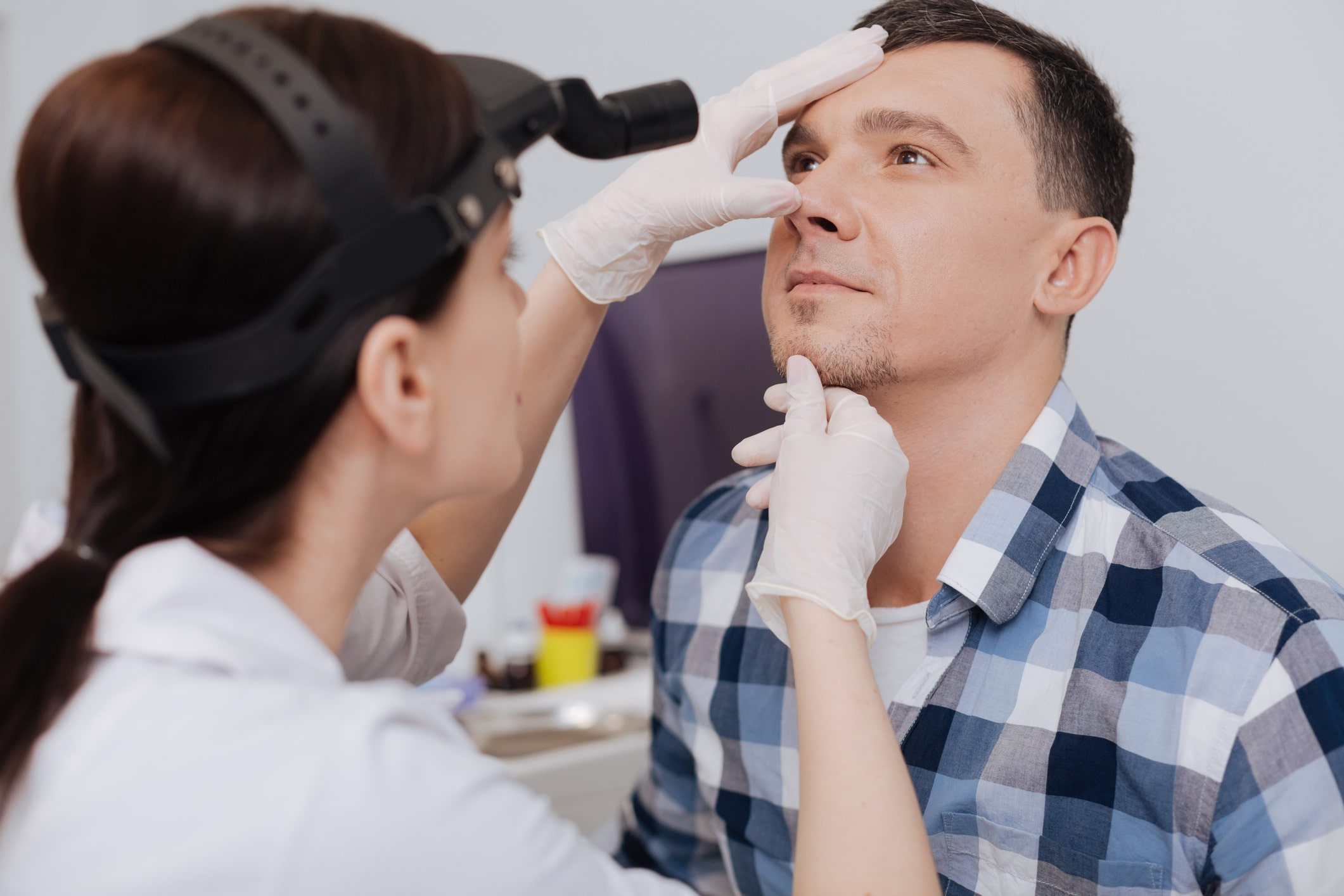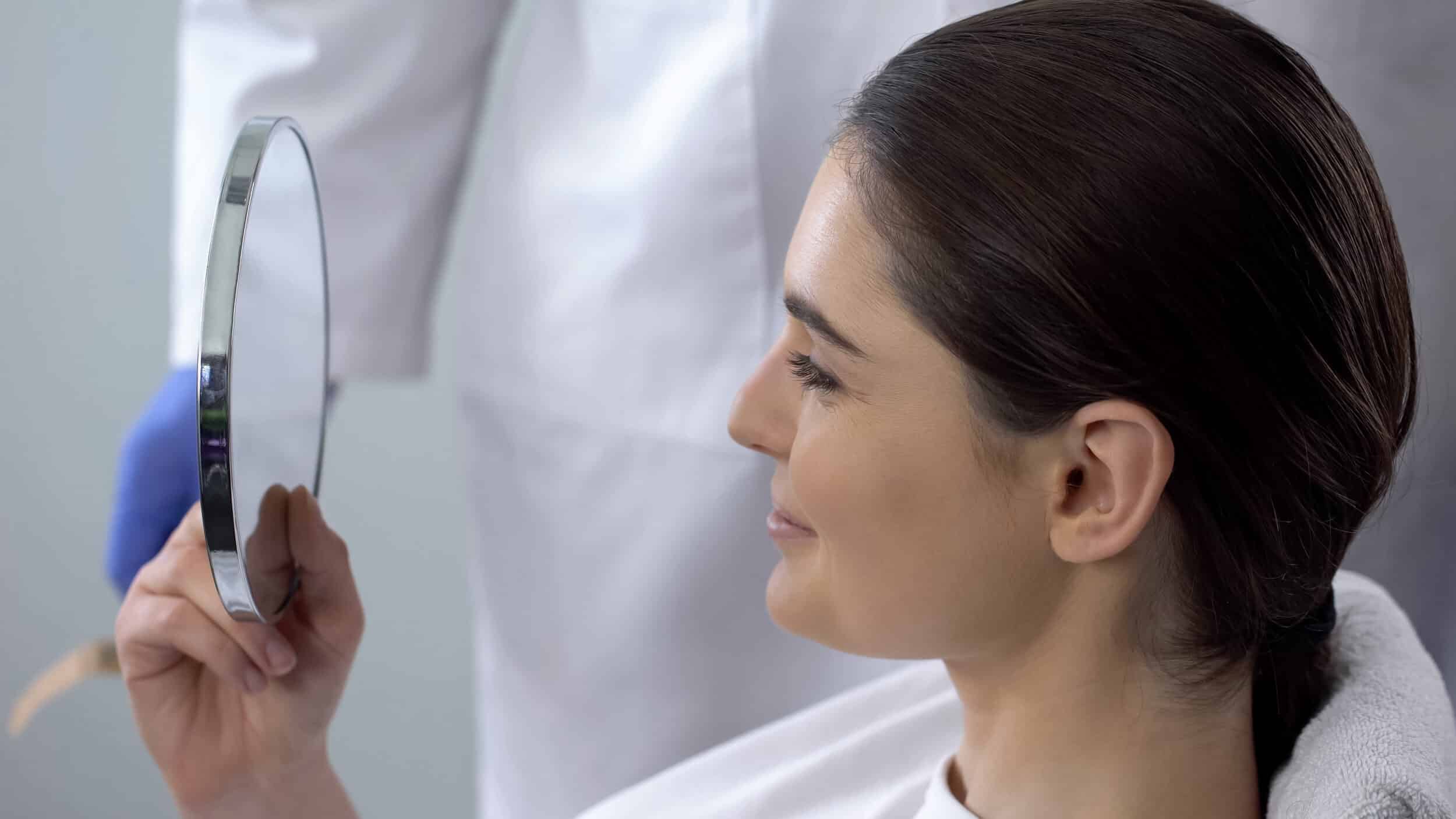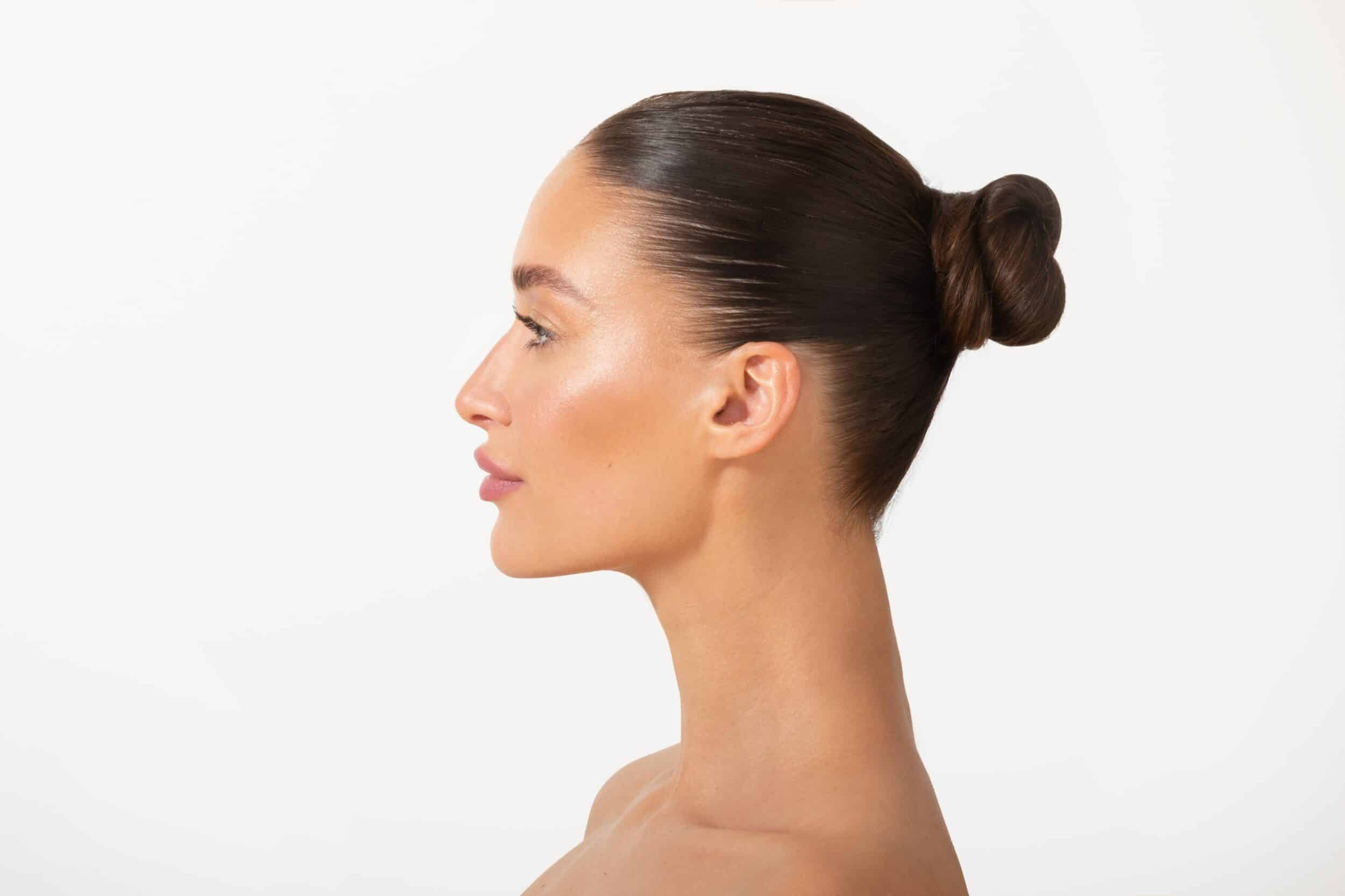Your nose holds a dominant position on your face. After your eyes, the nose is often the focus when meeting a new person. That’s why it’s a shame that many people aren’t happy with the appearance of their nose. Whether it’s the nose you were born with or whether you damaged it some time in your life, Dr. Lipton can perform nose surgery to change it. Dial (972) 420-0023 today to schedule your rhinoplasty consultation with Dr. Lipton!

What Is Rhinoplasty?
Rhinoplasty is the clinical term for cosmetic nose surgery. This is a delicate surgery whose goal is to reshape the nose to improve the appearance and in some cases the function. Most patients want to change a feature of their nose: maybe the nostrils are overly flared; maybe the bridge arches too prominently; maybe the tip is bulbous, or sometimes a person feels his or her nose is just not proportional on the face; whatever your concern is Dr. Lipton may be able to help.
Other patients have broken their nose at some point in their life. This not only can be aesthetically problematic but it often partially blocks one or both airways.
Septoplasty Vs. Rhinoplasty
Septoplasty is also a nose surgery, but its goal is to repair a deviated septum. A deviated septum is a displacement of the bone and cartilage that divides the two nostrils. During septoplasty, Dr. Lipton straightens and repositions the septum into the center of the nose. This may involve trimming, repositioning, and replacing cartilage. Septoplasty is a functional surgery we perform to help open the airways.
Benefits Of Nose Surgery
It’s hard to quantify the benefit of liking the nose you see in the mirror every morning, but a new nose that fits proportionally on your face and no longer has a bump on the bridge or other perceived flaws can be a real confidence booster.
If your surgery is functional, your breathing will improve. This can put an end to chronic snoring and possible sleep apnea.
Nose Surgery Patient Testimonial
Read What Our Patients Are Saying!
"I cannot say enough about Dr. Lipton and his staff. Our youngest daughter had septum issues and always disliked the shape of her nose. She was scared, hesitant, nervous and sweating thinking about surgery, but the moment Dr. Lipton walked in the exam room she instantly felt at ease. He's so easy going and funny, that she felt a bond with him the moment they met. He answered all of her questions, explained the surgery in detail, and put her mind at ease. It turned out that her septum issues were much more involved than originally expected, and surgery was a bit longer than we thought. However, Dr. Lipton never charged us anything additional and was literally on call the entire first night as he helped monitor the bleeding and pain. We never felt alone or concerned, as he was always on the other end of the phone! For the next few weeks he had her laughing as she went through the painful recovery and removal of the packing. The best part of all though is that no one notices the surgery, because he did such an amazing job of reshaping her nose…it looks SO natural. She can breathe better too, which of course is what we were striving for to begin with. His staff is always pleasant, very professional and friendly. We’re truly going to miss them now that the healing is just about complete. I would HIGHLY recommend Dr. Lipton for any surgical procedure…he’s simply one of the best human beings we’ve had the privilege to meet!"
Am I A Candidate For Nose Surgery?
Typically, anyone who doesn’t like his or her nose is a good candidate for nose surgery. The one qualification is age: the patient’s nose has to be fully-grown. This occurs at 15 to 16 for a girl, at 17 for a boy. There are many reasons people seek to change their nose. They usually fall into three categories:
- Appearance — This is the most common reason for nose surgery, to change the look of the patient’s nose. The surgery can really impact a person’s self-confidence. These are some of the most common reasons for cosmetic nose surgery:
- The tip droops or plunges
- The tip is enlarged or bulbous
- There is a bump or depression on the bridge
- The nostrils are excessively flared
- The nose is too wide or too large proportionally
- The nose is crooked or off-center
- Injury — Sports injuries, car accidents, and other trauma can leave the nose misshapen. Dr. Lipton can return the patient’s nose to its pre-accident condition.
- Breathing — Some people are born with constricted nasal passages. Rhinoplasty can open the nasal passages and improve function.
How Do I Prepare For My Rhinoplasty Or Septoplasty?
Preparing for rhinoplasty or septoplasty is no different than for any other surgery. You’ll need to stop taking any aspirin or ibuprofen two weeks prior, as they can increase bleeding. You’ll also have to stop taking certain other supplements and stop smoking. Dr. Lipton will walk you through the details during your consultation.
What Are The Different Types Of Rhinoplasty Procedures?
Dr. Lipton uses two methods for his nose surgeries. The changes sought by the patient can dictate which method he uses.
Open
First, we make a small incision across the columella (the small strip of skin between the nostrils). Then, we lift the skin up and back from the tip of the nose, exposing the underlying bone and cartilage. The open method is effective for addressing issues with the bridge. After Dr. Lipton makes alterations, he will re-drape the skin and tissue over the new structure beneath. The open method leaves a small scar underneath the nose, but it is almost invisible over time.

Closed
In the closed method, we make all incisions within the nose. This method is used when the nose is being reshaped or re-sized, or when there is a nasal obstruction. Once the incisions are made, the soft tissues are separated from the underlying bone and cartilage. If the nose is to be made thinner or smaller, the nasal bones will be fractured to allow them to be reduced. If the nose is being built up, Dr. Lipton may use synthetic material, or if the patient prefers he can use cartilage or bone from the patient’s ears or ribs.
How Long After Nose Surgery Will I See My Results?
You will notice your changes as soon as we remove your splint in about one week. You’ll have swelling, so you won’t see your final nose, but issues such as a bump on the bridge will be gone and noticeable. After a couple of months, your swelling should be pretty much over, and you’ll enjoy your new nose for the rest of your life.
What Is Recovery Like Following Nose Surgery?
After your surgery, Dr. Lipton will pack and splinter your nose. This protects and supports the new structure. You’ll need to keep your head elevated as much as possible during your first few days of recovery, including while sleeping. You’ll have swelling and both eyes will likely blacken.
The splint will come off in one week or so, but your nose will remain swollen for 10-14 days. After that, you will have some residual swelling that can persist for weeks, especially late in the day and at night. Strenuous exercise will have to be put off for several weeks. Obviously, any sport that can impact your nose will need to be avoided for a few months.
Does Insurance Cover Nasal Surgery?
A person’s insurance can help cover the costs of nasal surgery if it is required to repair the damage done as a result of an injury or to correct breathing problems.
What Should I Expect During the Initial Consultation for Rhinoplasty?
During your initial consultation for rhinoplasty, you can expect a thorough and personalized discussion about your goals and concerns. Here's an outline of what generally happens.
Medical History and Examination
Dr. Lipton will review your medical history. This includes any prior nasal injuries, surgeries, or breathing issues.

He will then perform a detailed examination of your nose, assessing its structure, skin quality, and functionality (e.g., breathing through each nostril).
Discussion of Goals
You can express what you'd like to change or improve about your nose's appearance or functionality. Dr. Lipton may ask questions to clarify your expectations and ensure they are realistic.
Customized Surgical Plan
Dr. Lipton will outline a tailored approach to address your concerns, detailing techniques that may be used (e.g., open or closed rhinoplasty, cartilage grafting). If relevant, he will also discuss functional issues, such as correcting a deviated septum.
Before-and-After Photos
You may be shown before-and-after photos of previous patients. This will help you understand Dr. Lipton's work and the potential results.
Will I Experience Significant Pain During or After the Procedure?
Pain management is a common concern for rhinoplasty patients. However, most find the discomfort to be manageable. Here's what you can expect.
During the Procedure
You won't feel any pain during the surgery. Dr. Lipton uses general anesthesia or local anesthesia with sedation to ensure you stay comfortable and pain-free.
Immediately After Surgery
Most patients report pressure or congestion rather than significant pain. This is due to swelling and nasal packing (if used).
Dr. Lipton will prescribe pain relievers to manage discomfort during the initial recovery phase.
The First Few Days
During the first few days, you will likely notice swelling, bruising, and tenderness around the nose and eyes. These issues should subside shortly after.
You may feel nasal congestion, especially if internal splints or packing are used. This will improve as your nose heals.
Long-Term Recovery
You might experience occasional tingling, numbness, or sensitivity as your nose heals. These symptoms usually resolve over time.
Will Rhinoplasty Affect My Sense of Smell or Breathing?
Rhinoplasty can temporarily alter your sense of smell and breathing during recovery. However, these changes are usually short-lived. Here's what you should know.
Effects on Breathing
Swelling inside the nose may cause a feeling of nasal congestion or restricted airflow. Nasal packing or splints can also contribute to initial, short-term breathing difficulties.

If your rhinoplasty includes correcting structural issues (such as a deviated septum), you may experience improved breathing once healing is complete.
Effects on Sense of Smell
Swelling in the nasal tissues can impair the sense of smell in the weeks following surgery. However, this is usually a short-term issue that improves as the swelling subsides.
Most patients regain their normal sense of smell within a few weeks to months, depending on the extent of the surgery and their healing process.
Why Choose Stuart Lipton, MD?
Choosing Dr. Stuart Lipton for your rhinoplasty means you will be in the hands of a skilled and trusted expert. Dr. Lipton is certified by the American Board of Plastic Surgery and has over 20 years of experience delivering exceptional results.
Dr. Lipton's dedication to excellence has earned him multiple Best Plastic Surgeon awards. His patients consistently praise him, and their respect for his work is reflected in his impressive 4.7-star rating on Google.
Call Dr. Lipton For A Rhinoplasty Consultation In Lewisville, TX!
For more information on the rhinoplasty procedure, contact our office today at (972) 420-0023 to schedule a consultation. Our practice serves Lewisville and surrounding areas in Texas.

